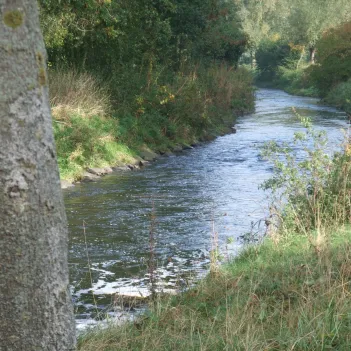OPRA
Protection and restoration of urban biodiversity by enhancing treatment wetlands for combined sewer overflows

© OPRA
- Category
- Project
- Call
- DUT Call 2024
- Duration
- –
- Project coordinator
- ENTPE, Graduate School of Civil, Environmental and Urban Engineering
The revision of the Urban Wastewater Treatment Directive (UWWTD) forces EU member states to reduce the discharge of untreated combined sewer overflows (CSOs) drastically. However, so far, only limited options exist to holistically reduce the pollutant and hydraulic peak loads from CSOs in urban environments. The most comprehensive treatment is currently provided by CSO treatment wetlands (TWs), consisting of a filter layer of engineered substrate with a retention volume of up to 2 m on its surface. They are planted with local species adapted to the harsh conditions (in Europe often Phragmites australis), and discharge the treated water in a controlled manner through the drainage layer into the adjacent surface waters. However, their space requirement, legislative hindrances and ignorance around their function limit their broad application in many regions. Reducing their overall footprint and quantifying their co-benefits for urban biodiversity is therefore a crucial step for further surface water protection.
Field investigations on macroinvertebrates coupling classical biomonitoring and innovative measurements of mitochondrial performances in receiving waters in Flanders/Belgium and Lyon metropolitan area/France as well as an assessment of riparian flora and fauna will provide new knowledge on the impact of CSO-TWs on biodiversity. It will be coupled with trials on behaviour and physiology of organisms and their offspring exposed to treated and untreated CSO, also in laboratory setups in France. Results from the biodiversity assessment will be implemented in Spain into an integrated holistic model considering runoff-sewer systems, and CSO-TW performance, receiving media and biodiversity as an additional co-benefit.
Although CSO-TWs have biodiversity co-benefits in comparison to grey infrastructure, space requirement is often a hindrance for their implementation. Currently estimated annual limits in fine particle load will be put into question during the project and design adaptions sought to reduce the required surface area requested in design standards.
We aim to investigate to what extent TWs in urban environments can reduce the degradation of aquatic organisms from CSO discharges, and how their broader application especially with a reduced surface area as one outcome can be reached to fulfil the requirements of the revised UWWTD in line with biodiversity protection and enhancement in these areas. The transfer of the project results into holistic sewer models will enable a direct transfer to city planners and other stakeholders, and promote multi-criteria assessment.
Stakeholder involvement from the beginning of the project guarantees that project results meet their needs and identify challenges for practitioners as well as decision makers in the urban water sector. As another pillar of the project, we will look at hindrances in legislation and common practices regarding the implementation of CSO-TWs, and try to identify in exchange with the stakeholders how such factors could be overcome.
Belgium
France
Spain
BGEO Open GIS, S.L., Institut Català de Recerca de l'Aigua, Universiteit Gent
Aquafin NV, Groupe de Recherche, Animation Technique et Information sur l'Eau
Links
Contact
Katharina Tondera
katharina.tondera@entpe.fr